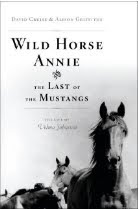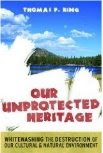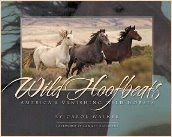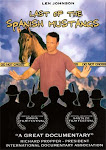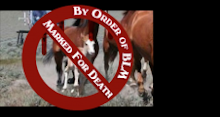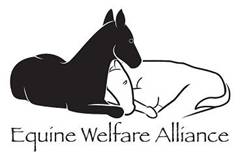
Photo courtesty of Wild Horse Spirit, Ltd. All Rights Reserved.
A Unified Call for an
Immediate Moratorium on
Wild Horse & Burro Roundups
On November 18, 2009, The Cloud Foundation, Equine Welfare Alliance and 120 Organizations, celebrities and scientists in the United States, Canada, the United Kingdom and South Africa signed onto the following letter sent to the President, Congress and the Department of the Interior to rein in the Bureau of Land Management today.
American Herds supports this moratorium and strongly urges everyone who cares about truly humane and appropriate management for America's mustangs and burros to add their voices to this unified call by sending THIS LETTER to your legislators and asking for their support!
Also, the Cloud Foundation is asking individuals to sign this PETITION. The goal is 12,043 signatures representing the number of wild horses and burros targeted for removal this year.
,/div>
A Unified Call for an Immediate Moratorium on
Wild Horse & Burro Roundups
And a humane, fiscally responsible plan
for preserving and protecting the iconic,
free-roaming wild horses and burros
of the American West.
President Obama, Members of Congress and the Department of the Interior:
We, the undersigned, request major changes to the Bureau of Land Management's (BLM) Wild Horse and Burro program. This must begin with an immediate moratorium on all roundups. While we agree that the program is in dire need of reform, and we applaud your Administration's commitment to avoid BLM’s suggested mass-killing of horses, the plan outlined in October by Interior Secretary Ken Salazar raises numerous concerns. These include:
*Perpetuating the flawed assumption that wild horses and burros are overpopulating their Western ranges. In reality, the BLM has no accurate current inventory of the 37,000 wild horses and burros it claims remain on public lands. Independent analysis of BLM’s own numbers reveal there may be only 15,000 wild horses remaining on public lands.
*Continuing the mass removal of wild horses and burros from their rightful Western ranges: The BLM intends to spend over $30 million in Fiscal Year 2010 to capture more than 12,000 wild horses and burros. This stockpiling of horses continues even as an astounding 32,000 are already being held in government holding facilities at enormous taxpayer expense.
*Scapegoating wild horses and burros for range deterioration even though they comprise only a tiny fraction of animals and wildlife grazing our public lands. Far greater damage is caused by privately-owned livestock, which outnumber the horses more than 100 to 1.
*Moving wild horses and burros east off their Western homelands to “sanctuaries” in the east and Midwest at an initial cost of $96 million creates significant health concerns if animals adapted to western landscapes are managed on wet ground and rich grasses.
*Removing tens of thousands of horses and burros from their legally-designated Western ranges and moving them into government-run facilities subverts the intent of the 1971 Wild Free-roaming Horse and Burro Act, which mandated that horses be preserved “where presently found.” A 2009 DC district court case held that “Congress did not authorize BLM to “manage” the wild horses and burros by corralling them for private maintenance or long-term care as non-wild free-roaming animals off the public lands.”
We appreciate your Administration's recognition of the horses’ value as an ecotourism resource. However, the display of captive, non-reproducing herds in eastern pastures renders them little more than zoo exhibits, further discounting the contribution to our history and the future of the American West.
We believe that workable solutions to create a healthy “multiple use” of public rangelands, protect the ecological balance of all wildlife, and preserve America's wild horses and burros in their rightful, legally protected home can be achieved. We are calling on the Obama Administration to reform the BLM's Wild Horse and Burro Management Program.
We ask that you reverse the current course and
immediately take the following actions:
1) Place a moratorium on all roundups until accurate and independent assessments of population numbers and range conditions are made available and a final, long-term solution is formalized.
2) Restore protections included in the 1971 Wild Free-Roaming Horse and Burro Act. Update existing laws that protect wild horses by reopening certain public lands to the mustangs and burros, thus decreasing the number in captivity. Return healthy wild horses and burros in holding to all available acres of public land designated primarily for their use in 1971. If these lands are not available, equivalent and appropriate western public lands should be added in their place.
3) Support federal grazing permit buybacks. Reduce livestock grazing and reanalyze appropriate management levels for herd management areas to allow for self-sustaining, genetically-viable herds to exist in the west.
4) Conduct Congressional hearings regarding the mismanagement of our wild herds and further investigate the inability of BLM to correct the shortcomings of the program as audited by the Government Accountability Office’s 1990, 1991 and 2008 reports.
Supported by the undersigned on November 16, 2009
ORGANIZATIONS
To add your voice to the Unified List of supporters calling for an immediate moratorium, please complete this FORM and email to:
ewa@equinewelfarealliance.org
or
info@thecloudfoundation.org
For further information and photos please contact:

Makendra Silverman
The Cloud Foundation
719.633.4933 ~ Office
719.351.8187 ~ Cell
info@thecloudfoundation.org
www.thecloudfoundation.org
SPOKESPERSON:
Ginger Kathrens
Volunteer Executive Director
The Cloud Foundation
719.633.4933
The Undersigned Hereby Unite As One Voice Calling For An
Immediate Moratorium On Wild Horse & Burro Round-Ups
Autonomous Makana Ndlambe Horse & Livestock Association, South Africa
Adapting Gaits, Inc.
Alex Brown Racing
American Horse Defense Fund
Americans Against Horse Slaughter
Americans Against Horse Slaughter in Arizona
Andean Tapir Fund
Angel's Gate Hospice & Rehabilitation Home for Animals
Animal Healing Connection
Animal Health and Safety Associates/Pixie Projects
Animal Iridology Center
Animal Law Coalition
Animal Legal Defense Fund
Animals' Angels
Beauty's Haven Farm & Equine Rescue, Inc.
Brad Woodard, Reporter
Canadian Horse Defence Coalition
Castleton Ranch Horse Rescue, Inc.
Chantal Westermann, former ABC reporter
The Cloud Foundation
Colorado Wild Horse and Burro Coalition
The Conquistador Equine Rescue and Advocacy Program
Cornwalls Voice for Animals
Craig Downer, wildlife ecologist and author
Senator Dave Wanzenried, Montana
Deanne Stillman, Author of Mustang
DreamCatcher Wild Horse and Burro Sanctuary
Ed Harris & Family
Emthunzini
Equine Advocates
Equine Protection Network
Equine Rescue and Protection Humane Society of the US, Inc.
Equine Welfare Alliance
For the Love of Jenny Animal Rescue
For the Love of the Horse
Force of the Horse© LLC.
Friends of A Legacy
Front Range Equine Rescue
George Wuerthner, ecologist
Glen Glasscock (long distance rider, world record holder)
The Golden Carrot
Gray Dapple Thoroughbred Assistance Program
Greater Houston Horse Council
Gypsy Heart Horse Rescue
Habitat for Horses, Inc.
Hacienda de los Milagros, Inc.
The Healing Journey Rescue
Helping Hearts Equine Rescue, Inc.
Hidden Creek Friesians
Hidden Valley Wild Horse Protection Fund
Home At Last Equine Rescue and Sanctuary
Honeysuckle Farms
Hope Ryden, congressional advisor on 1971 Act, Author America's Last Wild Horses
Horse Play
Horse Rescue, Relief and Retirement Fund, Inc.
Horseback Magazine
Humanion Films
Illinois Equine Humane Center, NFP
In Defense of Animals
Joe Camp, filmmaker, author The Soul of A Horse
Jouney's End Ranch Animal Sanctuary
KBR World of Wild Horses and Burros
Lacy J. Dalton, singer/songwriter
Laura Leigh, Illustrator/writer
Least Resistance Training Concepts (LRTC)
Let 'em Run
Lifesavers, Inc.
Live and Let Live Farm Rescue
Madeleine's Mustangs – Madeleine Pickens
Manes and Tails Organization
Maria Daines, Singer/Songwriter
Mary Ann Kennedy, Singer/Songwriter
MidAtlantic Horse Rescue
Mustang Spirit
Mylestone Equine Rescue
Native American Church of Ghost Dancers
Natural Horse Magazine
Natural Horse Talk
Old Friends Equine, A Kentucky Thoroughbred Retirement Facility
Paul Sorvino, Actor
Paula Bacon, former mayor of Kaufman, TX
Proud Spirit Horse Sanctuary
Quarter-Acre Rescue Ranch & Equine Advocacy Center
Rainbow Meadows Rescue and Retirement, Inc.
Redwings Horse Sanctuary
Reinfree.org Mestengo
The Rescue Friends
Sacred Heart Equine Rescue
Santiburi Farm
Saving America's Mustangs
Saving Horses, Inc.
Saving Our American Wild Horse
Second Chance Ranch
Silent Voices Equine Rescue
South Florida Society for the Prevention of Cruelty to Animals
Spirit Riders Foundation
Spoiled Acres Rescue Inc
Spring Farm CARES Animal Sanctuary
Star Lit Stables
Summer Haven Rescue
Sustainable Obtainable Solutions
Terri Farley, author of The Phantom Stallion Series
Tranquility Farm
Triple H Miniature Horse Rescue
trueCOWBOYmagazine
Wayne McCrory, Wildlife Biologist and Conservationist
Wendie Malick, Actress
Valhalla Wilderness Society
WFL Endangered Stream Live
Whispering Winds Equine Rescue
Wild Burro Rescue and Preservation Project
Wild For Life Foundation
Wild Hoofbeats
Wild Horse Observers Association
Wild Horse Preservation League
Wild Horse Spirit
Wild Horse War Room
Wildhorses In Need
Win Animal Rights
WindDancer Foundation, Inc.
Winecup/Gamble Ranch
A Unified Call for an
Immediate Moratorium on
Wild Horse & Burro Roundups
On November 18, 2009, The Cloud Foundation, Equine Welfare Alliance and 120 Organizations, celebrities and scientists in the United States, Canada, the United Kingdom and South Africa signed onto the following letter sent to the President, Congress and the Department of the Interior to rein in the Bureau of Land Management today.
American Herds supports this moratorium and strongly urges everyone who cares about truly humane and appropriate management for America's mustangs and burros to add their voices to this unified call by sending THIS LETTER to your legislators and asking for their support!
Also, the Cloud Foundation is asking individuals to sign this PETITION. The goal is 12,043 signatures representing the number of wild horses and burros targeted for removal this year.
,/div>
A Unified Call for an Immediate Moratorium on
Wild Horse & Burro Roundups
And a humane, fiscally responsible plan
for preserving and protecting the iconic,
free-roaming wild horses and burros
of the American West.
President Obama, Members of Congress and the Department of the Interior:
We, the undersigned, request major changes to the Bureau of Land Management's (BLM) Wild Horse and Burro program. This must begin with an immediate moratorium on all roundups. While we agree that the program is in dire need of reform, and we applaud your Administration's commitment to avoid BLM’s suggested mass-killing of horses, the plan outlined in October by Interior Secretary Ken Salazar raises numerous concerns. These include:
*Perpetuating the flawed assumption that wild horses and burros are overpopulating their Western ranges. In reality, the BLM has no accurate current inventory of the 37,000 wild horses and burros it claims remain on public lands. Independent analysis of BLM’s own numbers reveal there may be only 15,000 wild horses remaining on public lands.
*Continuing the mass removal of wild horses and burros from their rightful Western ranges: The BLM intends to spend over $30 million in Fiscal Year 2010 to capture more than 12,000 wild horses and burros. This stockpiling of horses continues even as an astounding 32,000 are already being held in government holding facilities at enormous taxpayer expense.
*Scapegoating wild horses and burros for range deterioration even though they comprise only a tiny fraction of animals and wildlife grazing our public lands. Far greater damage is caused by privately-owned livestock, which outnumber the horses more than 100 to 1.
*Moving wild horses and burros east off their Western homelands to “sanctuaries” in the east and Midwest at an initial cost of $96 million creates significant health concerns if animals adapted to western landscapes are managed on wet ground and rich grasses.
*Removing tens of thousands of horses and burros from their legally-designated Western ranges and moving them into government-run facilities subverts the intent of the 1971 Wild Free-roaming Horse and Burro Act, which mandated that horses be preserved “where presently found.” A 2009 DC district court case held that “Congress did not authorize BLM to “manage” the wild horses and burros by corralling them for private maintenance or long-term care as non-wild free-roaming animals off the public lands.”
We appreciate your Administration's recognition of the horses’ value as an ecotourism resource. However, the display of captive, non-reproducing herds in eastern pastures renders them little more than zoo exhibits, further discounting the contribution to our history and the future of the American West.
We believe that workable solutions to create a healthy “multiple use” of public rangelands, protect the ecological balance of all wildlife, and preserve America's wild horses and burros in their rightful, legally protected home can be achieved. We are calling on the Obama Administration to reform the BLM's Wild Horse and Burro Management Program.
We ask that you reverse the current course and
immediately take the following actions:
1) Place a moratorium on all roundups until accurate and independent assessments of population numbers and range conditions are made available and a final, long-term solution is formalized.
2) Restore protections included in the 1971 Wild Free-Roaming Horse and Burro Act. Update existing laws that protect wild horses by reopening certain public lands to the mustangs and burros, thus decreasing the number in captivity. Return healthy wild horses and burros in holding to all available acres of public land designated primarily for their use in 1971. If these lands are not available, equivalent and appropriate western public lands should be added in their place.
3) Support federal grazing permit buybacks. Reduce livestock grazing and reanalyze appropriate management levels for herd management areas to allow for self-sustaining, genetically-viable herds to exist in the west.
4) Conduct Congressional hearings regarding the mismanagement of our wild herds and further investigate the inability of BLM to correct the shortcomings of the program as audited by the Government Accountability Office’s 1990, 1991 and 2008 reports.
Supported by the undersigned on November 16, 2009
ORGANIZATIONS
To add your voice to the Unified List of supporters calling for an immediate moratorium, please complete this FORM and email to:
ewa@equinewelfarealliance.org
or
info@thecloudfoundation.org
For further information and photos please contact:

Makendra Silverman
The Cloud Foundation
719.633.4933 ~ Office
719.351.8187 ~ Cell
info@thecloudfoundation.org
www.thecloudfoundation.org
SPOKESPERSON:
Ginger Kathrens
Volunteer Executive Director
The Cloud Foundation
719.633.4933

John Holland
Equine Welfare Alliance
540.268.5693
john@equinewelfarealliance.org
The Undersigned Hereby Unite As One Voice Calling For An
Immediate Moratorium On Wild Horse & Burro Round-Ups
Autonomous Makana Ndlambe Horse & Livestock Association, South Africa
Adapting Gaits, Inc.
Alex Brown Racing
American Horse Defense Fund
Americans Against Horse Slaughter
Americans Against Horse Slaughter in Arizona
Andean Tapir Fund
Angel's Gate Hospice & Rehabilitation Home for Animals
Animal Healing Connection
Animal Health and Safety Associates/Pixie Projects
Animal Iridology Center
Animal Law Coalition
Animal Legal Defense Fund
Animals' Angels
Beauty's Haven Farm & Equine Rescue, Inc.
Brad Woodard, Reporter
Canadian Horse Defence Coalition
Castleton Ranch Horse Rescue, Inc.
Chantal Westermann, former ABC reporter
The Cloud Foundation
Colorado Wild Horse and Burro Coalition
The Conquistador Equine Rescue and Advocacy Program
Cornwalls Voice for Animals
Craig Downer, wildlife ecologist and author
Senator Dave Wanzenried, Montana
Deanne Stillman, Author of Mustang
DreamCatcher Wild Horse and Burro Sanctuary
Ed Harris & Family
Emthunzini
Equine Advocates
Equine Protection Network
Equine Rescue and Protection Humane Society of the US, Inc.
Equine Welfare Alliance
For the Love of Jenny Animal Rescue
For the Love of the Horse
Force of the Horse© LLC.
Friends of A Legacy
Front Range Equine Rescue
George Wuerthner, ecologist
Glen Glasscock (long distance rider, world record holder)
The Golden Carrot
Gray Dapple Thoroughbred Assistance Program
Greater Houston Horse Council
Gypsy Heart Horse Rescue
Habitat for Horses, Inc.
Hacienda de los Milagros, Inc.
The Healing Journey Rescue
Helping Hearts Equine Rescue, Inc.
Hidden Creek Friesians
Hidden Valley Wild Horse Protection Fund
Home At Last Equine Rescue and Sanctuary
Honeysuckle Farms
Hope Ryden, congressional advisor on 1971 Act, Author America's Last Wild Horses
Horse Play
Horse Rescue, Relief and Retirement Fund, Inc.
Horseback Magazine
Humanion Films
Illinois Equine Humane Center, NFP
In Defense of Animals
Joe Camp, filmmaker, author The Soul of A Horse
Jouney's End Ranch Animal Sanctuary
KBR World of Wild Horses and Burros
Lacy J. Dalton, singer/songwriter
Laura Leigh, Illustrator/writer
Least Resistance Training Concepts (LRTC)
Let 'em Run
Lifesavers, Inc.
Live and Let Live Farm Rescue
Madeleine's Mustangs – Madeleine Pickens
Manes and Tails Organization
Maria Daines, Singer/Songwriter
Mary Ann Kennedy, Singer/Songwriter
MidAtlantic Horse Rescue
Mustang Spirit
Mylestone Equine Rescue
Native American Church of Ghost Dancers
Natural Horse Magazine
Natural Horse Talk
Old Friends Equine, A Kentucky Thoroughbred Retirement Facility
Paul Sorvino, Actor
Paula Bacon, former mayor of Kaufman, TX
Proud Spirit Horse Sanctuary
Quarter-Acre Rescue Ranch & Equine Advocacy Center
Rainbow Meadows Rescue and Retirement, Inc.
Redwings Horse Sanctuary
Reinfree.org Mestengo
The Rescue Friends
Sacred Heart Equine Rescue
Santiburi Farm
Saving America's Mustangs
Saving Horses, Inc.
Saving Our American Wild Horse
Second Chance Ranch
Silent Voices Equine Rescue
South Florida Society for the Prevention of Cruelty to Animals
Spirit Riders Foundation
Spoiled Acres Rescue Inc
Spring Farm CARES Animal Sanctuary
Star Lit Stables
Summer Haven Rescue
Sustainable Obtainable Solutions
Terri Farley, author of The Phantom Stallion Series
Tranquility Farm
Triple H Miniature Horse Rescue
trueCOWBOYmagazine
Wayne McCrory, Wildlife Biologist and Conservationist
Wendie Malick, Actress
Valhalla Wilderness Society
WFL Endangered Stream Live
Whispering Winds Equine Rescue
Wild Burro Rescue and Preservation Project
Wild For Life Foundation
Wild Hoofbeats
Wild Horse Observers Association
Wild Horse Preservation League
Wild Horse Spirit
Wild Horse War Room
Wildhorses In Need
Win Animal Rights
WindDancer Foundation, Inc.
Winecup/Gamble Ranch




